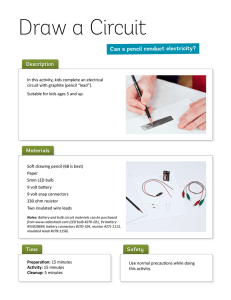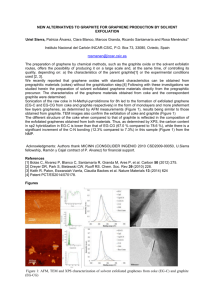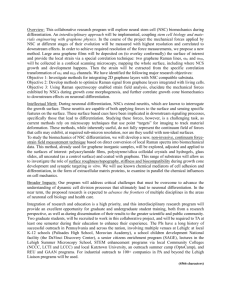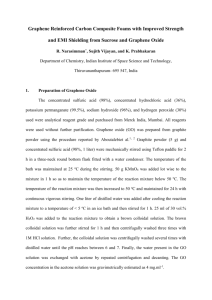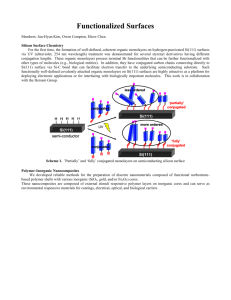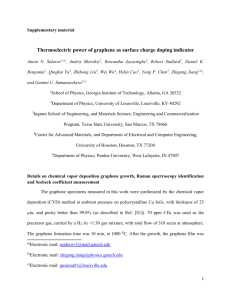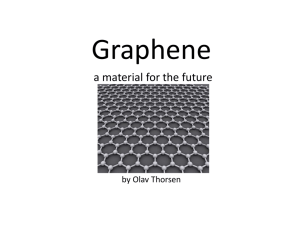Spin polarized transport in semiconductors – Challenges for
advertisement
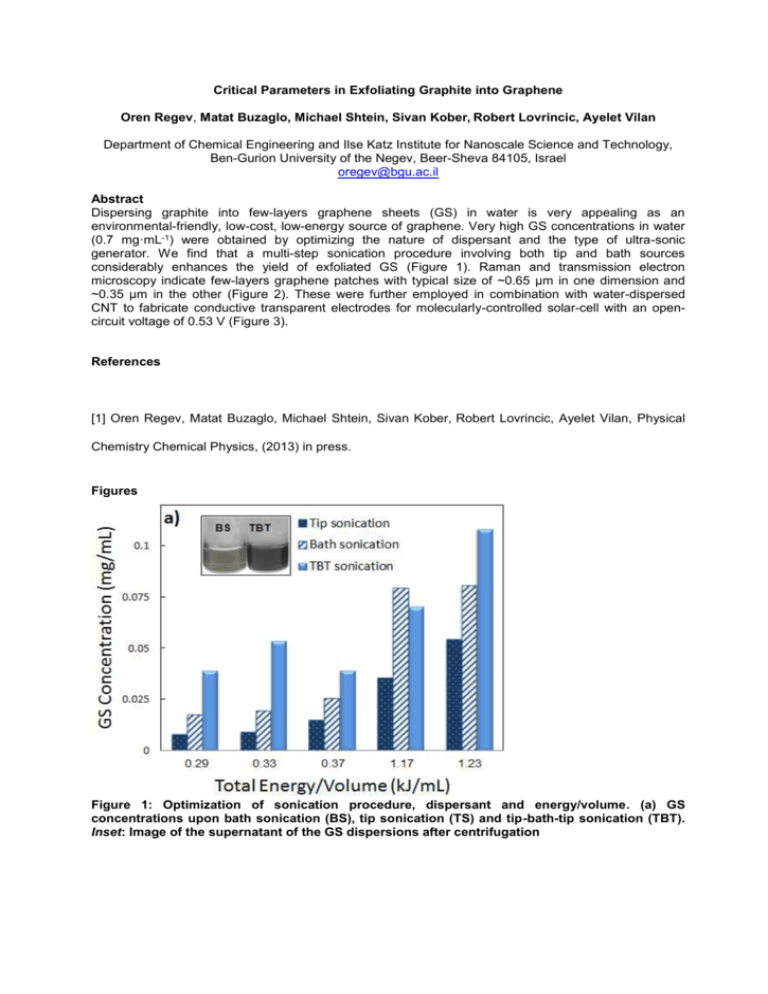
Critical Parameters in Exfoliating Graphite into Graphene Oren Regev, Matat Buzaglo, Michael Shtein, Sivan Kober, Robert Lovrincic, Ayelet Vilan Department of Chemical Engineering and Ilse Katz Institute for Nanoscale Science and Technology, Ben-Gurion University of the Negev, Beer-Sheva 84105, Israel oregev@bgu.ac.il Abstract Dispersing graphite into few-layers graphene sheets (GS) in water is very appealing as an environmental-friendly, low-cost, low-energy source of graphene. Very high GS concentrations in water (0.7 mg·mL-1) were obtained by optimizing the nature of dispersant and the type of ultra-sonic generator. We find that a multi-step sonication procedure involving both tip and bath sources considerably enhances the yield of exfoliated GS (Figure 1). Raman and transmission electron microscopy indicate few-layers graphene patches with typical size of ~0.65 μm in one dimension and ~0.35 µm in the other (Figure 2). These were further employed in combination with water-dispersed CNT to fabricate conductive transparent electrodes for molecularly-controlled solar-cell with an opencircuit voltage of 0.53 V (Figure 3). References [1] Oren Regev, Matat Buzaglo, Michael Shtein, Sivan Kober, Robert Lovrincic, Ayelet Vilan, Physical Chemistry Chemical Physics, (2013) in press. Figures Figure 1: Optimization of sonication procedure, dispersant and energy/volume. (a) GS concentrations upon bath sonication (BS), tip sonication (TS) and tip-bath-tip sonication (TBT). Inset: Image of the supernatant of the GS dispersions after centrifugation Intensity (A.U.) 80000 b) Graphite G 60000 FLG 40000 2D D Graphite 20000 FLG 0 1000 1500 2000 2500 3000 3500 -1 Raman Shift (cm ) Figure 2. Indication for few layers of graphene showing a) Room temperature TEM micrographs of GS stacks from GS-TX-100. The diffraction pattern (inset) indicates that the GS are less than 5 layers thick, b) the Raman spectra of graphene film on quartz substrate at 514 nm. Inset shows a zoom-up of the 2D peak. Figure 3. Transmittance (T) vs. sheet resistance (Rs) for mixed GS-CNT films spin-coated on glass substrates. Transmittance values are averaged and use the bare glass substrate is the reference. The inset shows a typical transmittance spectrum.



